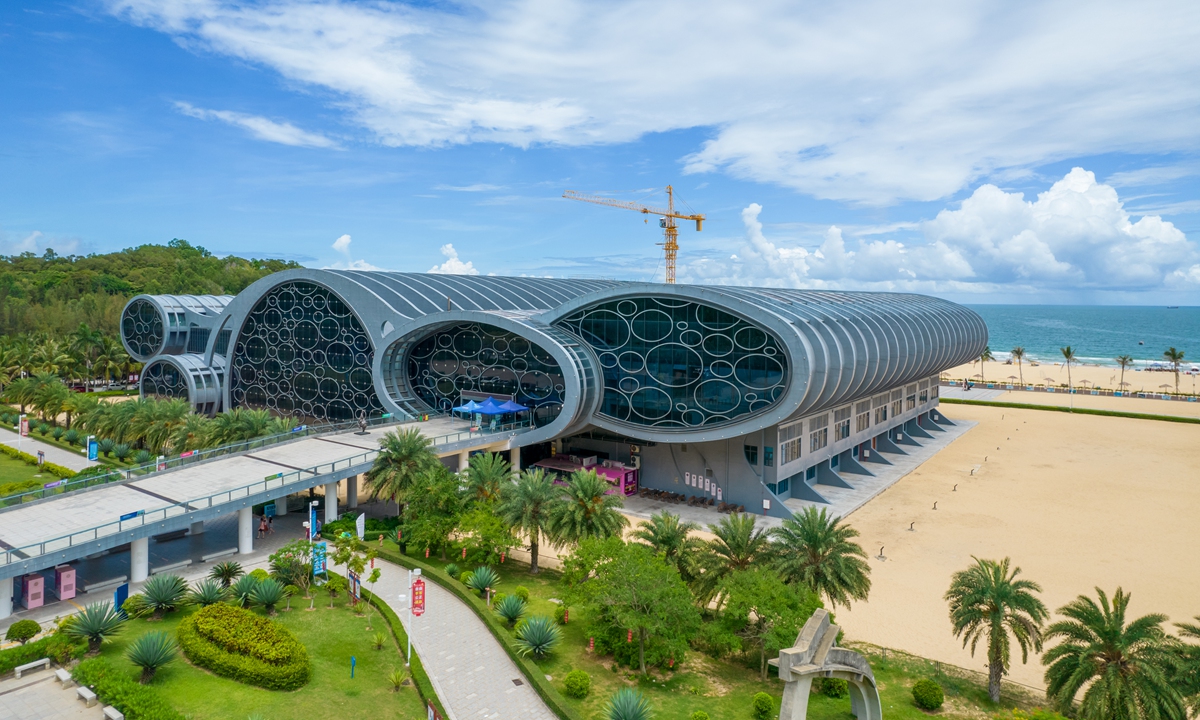
The Maritime Silk Road Museum of Guangdong in Yangjiang, South China's Guangdong Province Photo: VCG
Focusing on up-to-date means to continue the cultural legacies of the Maritime Silk Road, an international forum attended by 140 experts from around the world was recently held in Qionghai, South China's Hainan Province.
The "achievements in excavation and research" was one of the forum's highlight topics. Experts noted that in recent years the topic has mainly been associated with China's underwater archaeological developments.
Experts have focused on discussing the Nanhai No.1, a Song Dynasty (960-1279) shipwreck. Discovered in 1987, the shipwreck bore witness to China's cultural and commercial exchanges along the Maritime Silk Road 800 years ago.
Ye Daoyang, an expert at the Maritime Silk Road Museum of Guangdong (MSRMG) where the shipwreck is currently housed, told the Global Times that the Nanhai No.1 is "the most significant material evidence" for exhibiting China's "important role" in the development of the Maritime Silk Road in ancient times.
"China was a pioneering country starting off East-West exchanges of cultural products like porcelains and also other commercial goods," Ye said, emphasizing that the country also boasts prolific historical underwater sites.
Including the iconic Nanhai No.1 shipwreck, 138 underwater cultural remains have been found in the South China Sea, Deng Qijiang, deputy director of the Institute of Underwater Archaeology of State Administration of Cultural Heritage, said at the forum.
Chi Lilu, an underwater archaeologist, told the Global Times that China's innovations such as high-tech "manned underwater vehicles" and "revolutionary salvaging methods" have encouraged Chinese researchers to seek out creative means to research Maritime Silk Road cultural legacies.
"China's exploration of the underwater legacies of the Maritime Silk Road started back in the 1980s. Now we are at a stage to explore the social and cultural value of these legacies," Chi remarked.
At the forum, Xin Lixue, the director of China (Hainan) Museum of the South China Sea, said that over years the museum has hosted 37 original exhibitions aimed at popularizing knowledge of the Maritime Silk Road among the public.
"Overseas collaboration" is not only the facility's next goal but also the next strategy for China's overall Maritime Silk Road development.
"At present, China and Southeast Asia countries and regions in the field of underwater archaeology continue to carry out international exchanges and cooperation," said Tang Wei, head of China's National Centre for Archaeology.
Against the backdrop of the establishment of the Hainan Free Trade Port, experts have also discussed the inheritance and contemporary usage of Maritime Silk Road cultural legacies. Tang said that "international cooperation in relic restoration" and "development of creative cultural products" are two areas that can benefit from international exchanges.
"The Maritime Silk Road legacy can also 'crossover' with other fields like tourism and education to fulfill its creative transformation," Ye told the Global Times.
Other than the forum, a social and education activity has also been launched during the event to attract the attention of young visitors. The activity includes a creative market selling toys and stationary inspired by the Maritime Silk Road culture.
Titled the 4th Forum on the Protection of Cultural Heritage of the Maritime Silk Road, the event is organized by the State Administration of Cultural Heritage and the People's Government of Hainan Province.
URL: https://www.seeglobalnews.com/read-2437.html